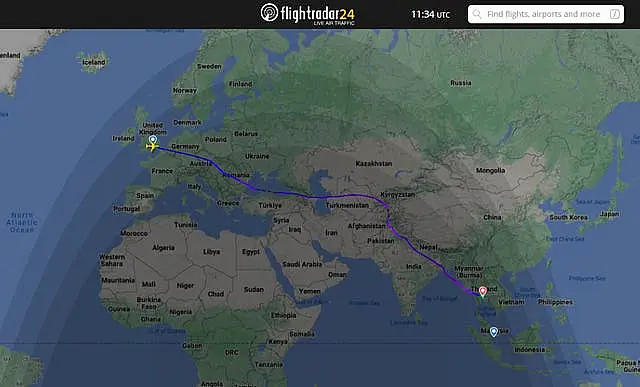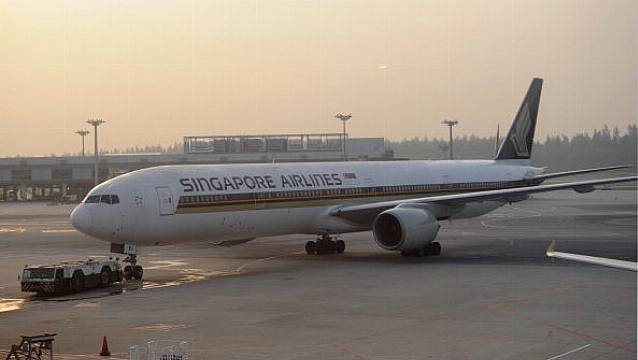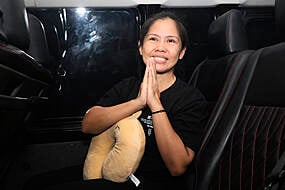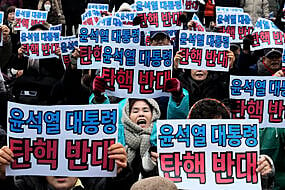A British airline passenger has died and many other people were injured when a Singapore Airlines flight from London's Heathrow Airport hit severe turbulence.
A spokesman for Bangkok’s Suvarnabhumi Airport, where the flight was diverted to, said the 73-year-old man suffered a suspected heart attack.
He added that seven other people were seriously injured.

One of the passengers on board Flight SQ321 to Singapore said the plane suffered a “dramatic drop”, meaning people not wearing a seatbelt were “launched immediately into the ceiling”.
Images posted on social media showed damage to the ceiling of the cabin, and food, cutlery and other debris strewn on the floor in the aftermath of the incident.
The flight, operated by a Boeing 777-300ER jet, departed at 10.17pm on Monday and was diverted to Bangkok, landing at 3.45pm local time (9.45am BST) on Tuesday.
There were 211 passengers and 18 crew on board.
Singapore Airlines said: “Singapore Airlines flight SQ321, operating from London Heathrow to Singapore on May 20, encountered severe turbulence en-route.
“We can confirm that there are injuries and one fatality on board.
“Singapore Airlines offers its deepest condolences to the family of the deceased.
“Our priority is to provide all possible assistance to all passengers and crew on board the aircraft.
“We are working with the local authorities in Thailand to provide the necessary medical assistance and sending a team to Bangkok to provide any additional assistance needed.”
Tracking data published by FlightRadar24 shows the plane was cruising at an altitude of 37,000 feet over the Andaman Sea off the coast of Myanmar shortly after 9am BST when it sharply dropped by 6,000 feet.
Student Dzafran Azmir (28) who was on the flight, told Reuters: “Suddenly the aircraft starts tilting up and there was shaking so I started bracing for what was happening, and very suddenly there was a very dramatic drop, so everyone seated and not wearing a seatbelt was launched immediately into the ceiling.
“Some people hit their heads on the baggage cabins overhead and dented it, they hit the places where lights and masks are and broke straight through it.”
Two British Airways cabin crew suffered broken legs when a flight from Singapore to Heathrow was affected by severe turbulence over the Bay of Bengal on June 28th last year.
A report by the Air Accidents Investigation Branch said “unsecured cabin crew were thrown around in the cabin”, resulting in two crew members being seriously injured and three sustaining minor injuries.
No passengers were hurt and the plane returned to Singapore.
Aviation consultant John Strickland told the PA news agency that “turbulence happens” but with millions of flights operated each year, incidents are “limited” and “fatalities are rare”.
He said: “Exposure is greater in different parts of the world. The South Atlantic, Africa and the Bay of Bengal are all places that spring to mind where there’s a greater incidence.
“There are discussions about whether climate change is influencing an increase in occurrences.”
Mr Strickland said airlines use a variety of methods to minimise the chances of a flight being affected by turbulence, such as weather forecasts, radar and reports from aircraft ahead.
He added: “It can never be taken lightly when airlines recommend you keep the seatbelt loosely fastened throughout the flight.”
Joji Waites, head of flight safety at pilots’ union Balpa, said: “Balpa sends its thoughts to the family and friends of those affected by this event.
“Aircraft are designed and certificated to withstand flight in severe turbulence, and pilots are trained in how to anticipate potential turbulence encounters based on weather forecasts and the aircraft’s onboard technology.
“Route weather forecasts provide a general prediction of when turbulence is likely to occur, but they often cannot reflect actual conditions in sufficient detail to enable pilots to avoid specific instances of turbulence.
“It is important, therefore, for aircraft occupants to have their seatbelts fastened while seated should any unexpected encounters occur and comply promptly with ‘fasten seat belt’ signs when asked to do so.”







